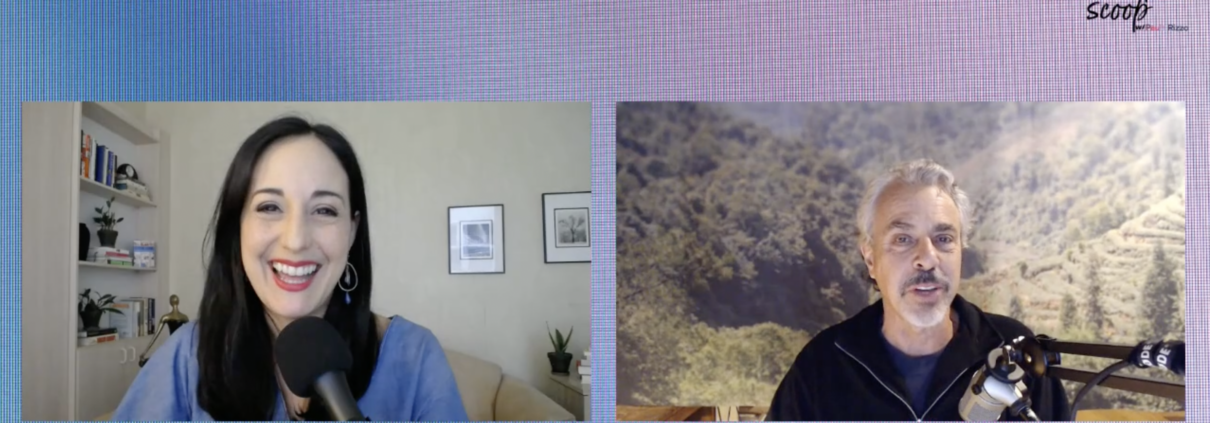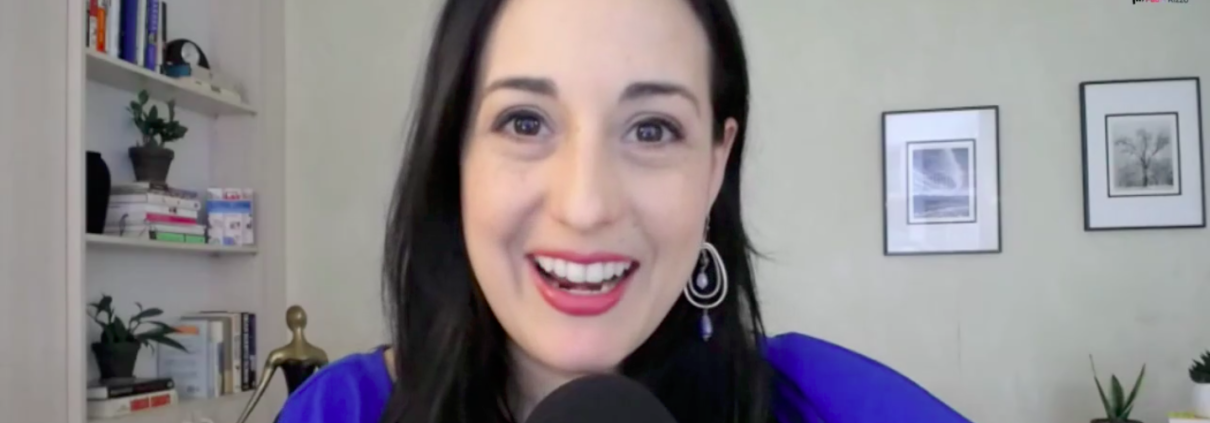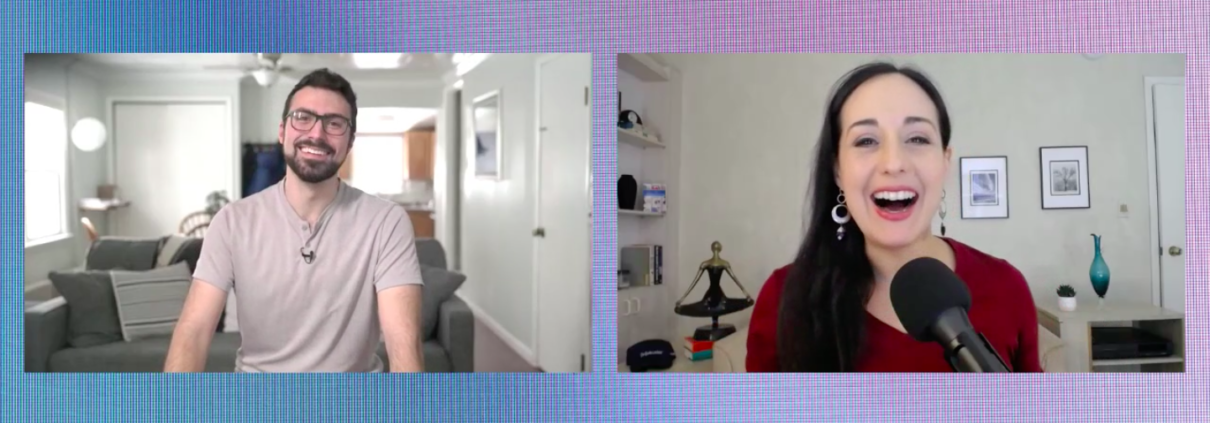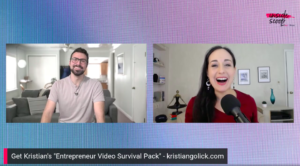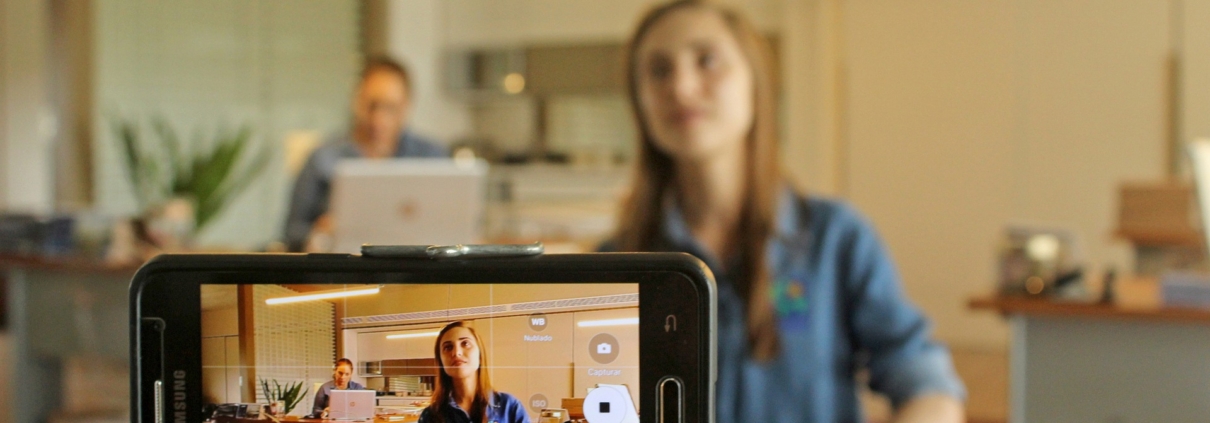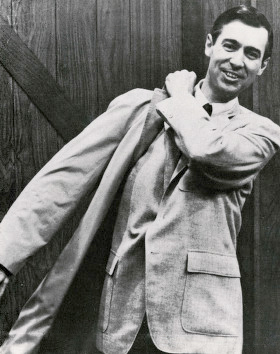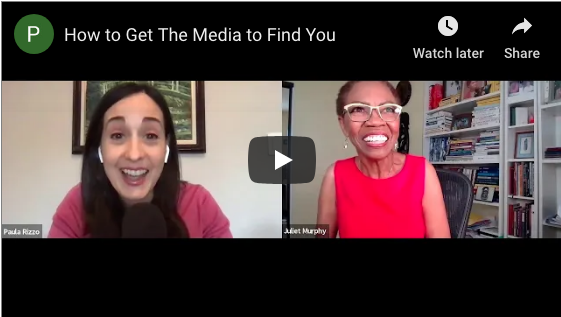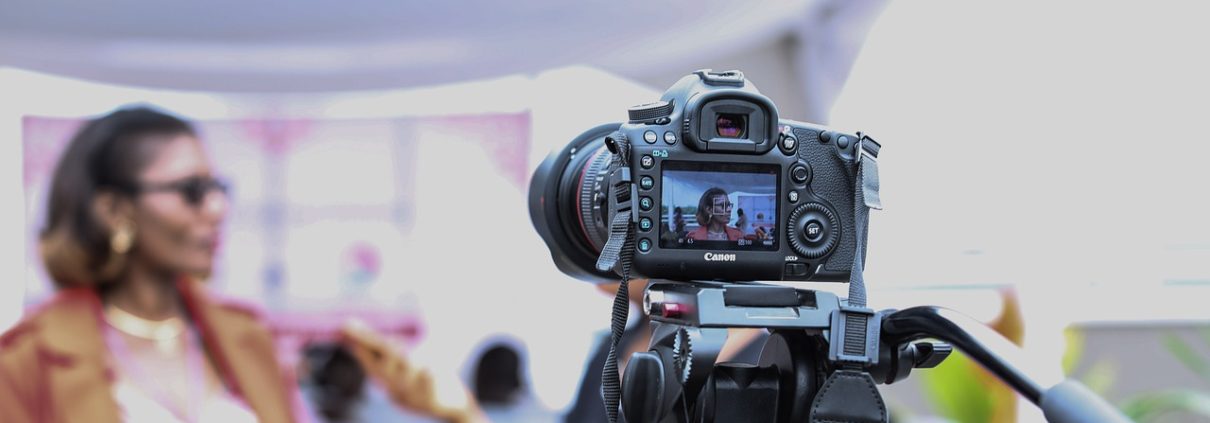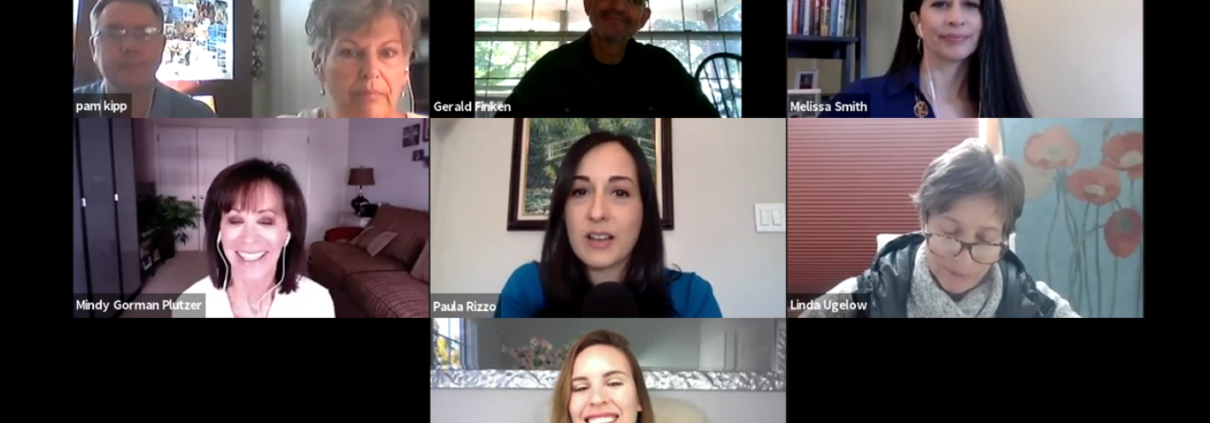[Want to create videos that get attention? Check out my free webinar: Produce Like A Pro: How to Create Compelling Video and Handle Any On-Camera Interview“]
Small Biz Trends says this year, 2019, global consumer Internet video traffic will account for 80% of all consumer Internet traffic. 80% is a lot of eyeballs – are you engaging them to know, like and trust you?
A lot of experts THINK they are doing just that but there are some trends in video production you should avoid like the plague.
Here’s some of the biggest mistakes people are making when producing their own videos:
MISTAKE #1: Using Video ONLY to Sell
In the Internet marketing world videos are used, and for good reason, to sell products, coaching packages and more. There’s a good reason for that – when a potential customer sees you and hears you they connect with you. Hopefully they like you and eventually buy your product. To be clear – using video to sell a product will boost your chances. In fact, Hubspot.com says adding a video on a landing page can increase conversion rates by 80%.
However, the biggest issue happening with entrepreneurs is that you’re using video ONLY when you want to sell some big ticket item.
All of a sudden our newsfeeds get flooded with your Facebook Lives and your YouTube account has tons and tons of pre-launch content leading the viewer into your funnel. It starts to become a little disingenuous.
WHAT DO TO INSTEAD: Consistently be of service with high-quality content
Think about it. If you only hear from a friend when she’s in the middle of a breakup and needs something from you that will get old fast. Right? When I was a senior producer at Fox News Channel I received hundreds of pitches a day. I only heard from those experts when they wanted to be on TV. That’s it. The ones who made a real effort to connect with me and have a relationship were the ones who got my attention – and in the end – a segment. They reached out to me even when they weren’t trying to get on TV, but to see what they could do to make my job easier.
In fact, I presented a webinar recently called, “Produce Like A Pro: How to Create Compelling Video and Handle Any On-Camera Interview“ and in it I talk all about how to connect with the audience through the content that you share. To check it out click here for the recording.
Use whatever example you like but no one likes to be used. And your potential clients are exactly the same. Consistently share high-quality content with them to be helpful and change their lives. That’s what this is all about. You should be using your expertise to change people – not just fill your pockets with cash. (Although let’s be serious – that’s nice too!)
MISTAKE #2: Stop Looking At Yourself!
This drives me insane. Whenever I media train a client it’s one of the first points I go over. Stop looking at yourself in selfie mode when you’re recording a video! What you’re doing is showing the audience that you aren’t connected with them. You are only looking at yourself. It’s like they don’t even matter. If you are looking down or off to the side it’s easy to lose interest and click to a different video where the expert is ore engaged.
WHAT TO DO INSTEAD: Look Directly Into the Camera
Whether you’re recording a video on your iPhone or on your computer look directly into the CAMERA. It feels awkward to not be looking at the person on the other end of the Zoom or Skype connection if you’re doing an in interview but trust me – it looks so much better if you’re looking into the camera. And that goes for any time you’re producing videos on your own and not interviewing someone too.
MISTAKE #3: You Go On and On and On and On and On
If I had a dollar for every wasted minute of video I’d be a billionaire. Many of the videos I watch online simply go on too long. Do you know how many makeup tutorials are out there which feature 10+ minutes of talking before they even start showing you how to apply anything?
Without true intention and planning your video will just seem like a video diary. This might be fun for you but for the viewer it gets tired fast. Your videos should be showcasing your expertise in a fun and engaging way.
WHAT TO DO INSTEAD: Be Concise, Clear and Compelling
Practice and plan out your videos before you push record. I know a lot of you are thinking, “Oh I’m great off the cuff.” Great. Except everyone thanks that and very few people actually are.
Trust me I’ve worked with seasoned anchors and reporters for nearly two decades and it took them lots and lots of consistent practice to be great “off the cuff.” Plus, unless it’s breaking news, those reporters and anchors have rehearsed what they’re going to say and are most likely reading off a TelePrompTer.
Intension is key when producing videos. Make sure you know why you’re doing it and what the audience will take away from investing a few minutes with you.
How long should a video be? Well that depends. The short answer is short. Like under two minutes. The longer answer is sometimes you have to break that rule to get the message across and teach something. For instance, if you’re doing a cooking demo or showing how to use a piece of software it might take more than two minutes and that’s OK.
MISTAKE #4: Don’t Hold Your Phone Vertically
Ok before all the social media gurus freak out here – yes there are exceptions to this rule. When you’re shooting videos for InstagramTV and Facebook Live using your iPhone you should hold the camera vertically. But that’s it! Otherwise your video has black bars on the side and you aren’t filling up the whole screen as you should be. It’s distracting and looks like poor quality.
WHAT TO DO INSTEAD: Hold the Phone Horizontally
Whenever you’re producing a video for YouTube or to upload to LinkedIn, etc. you should hold your iPhone horizontally with the home button to the right if you have the front of the phone pointing at you. This will allow your image to fill up the entire screen and look best when people view this video on their phone horizontally. It also gives your audience a better view if your trying to demonstrate something.
MISTAKE #5: Use the Camera’s Built-In Microphone
Sure, in a pinch using the camera’s microphone is fine. But I wouldn’t make a habit of it. When you skip using a microphone to amplify your message you lose intimacy with an audience. There’s a richness and closeness to audio that is projected correctly. It’s the same concept I mentioned before with looking into the camera directly so look at your audience. If you do this correctly you’ll have a connection with them that will be hard to resist.
WHAT TO DO INSTEAD: Invest In a Quality Microphone to Amplify Your Message
Always use a microphone whenever possible If you’re recording videos or podcasts on your computer, this is the microphone that I use and it works really well. It’s moderately priced and is easy to set up. I’d also probably add what’s called a pop-filter to the top of it incase you pop your p’s like I do! It will help to soften the harsh sounds.
If you’re producing videos using your iPhone you can use a clip-on lav microphone. This is the one that I have and use for most of my videos. If you use audio correctly you’ll have a connection with your audience that will be hard to resist.
[Want to create videos that get attention? Check out my free webinar: Produce Like A Pro: How to Create Compelling Video and Handle Any On-Camera Interview]

